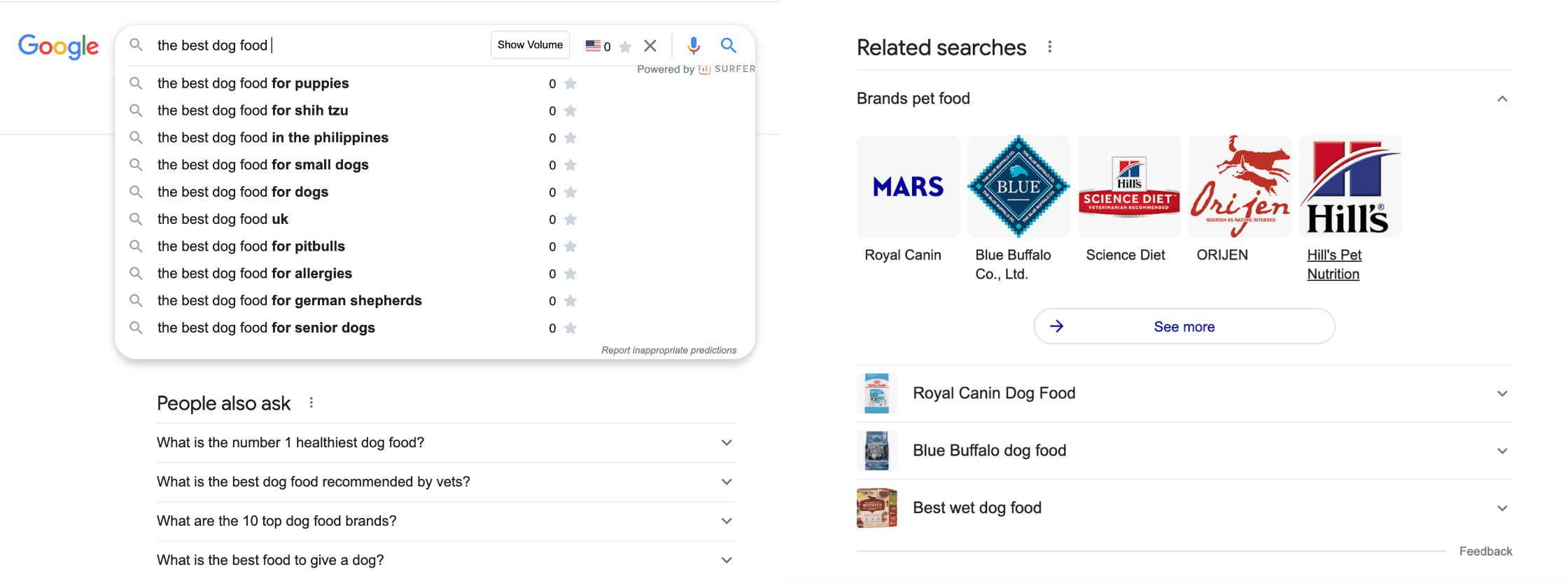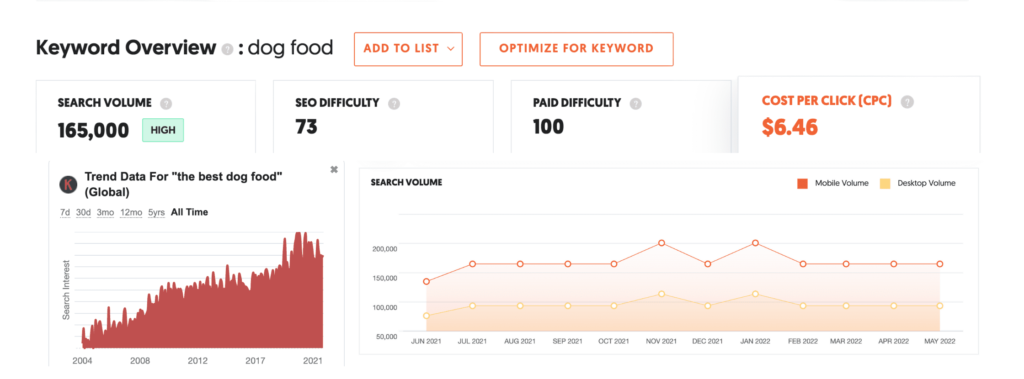Like most business owners, you want more people to visit your website. And if you’re a business owner like most, you probably don’t have time to learn how to write SEO-friendly blog posts.
Lucky for you, we’ve put together a list of tips that will help optimize your content and improve your search engine ranking.
So whether you’re completely new to SEO or just looking for a few extra tips, keep reading!
- 1. Start by doing your research
- 2. Choose the right keywords
- 3. Optimize your content for readability
- 4. Use external links sparingly
- 5. Link to High-Authority Websites
- 6. Promote your Posts on Social Media
- 7. Use SEO-Plugins
- 8. Monitor your results and make changes as needed
- FAQs: How to Write SEO-Friendly Blog Posts
- Conclusion
Anyone who’s ever Googled anything knows that SEO is important. The higher your ranking on a search engine, the more likely people will find your site. And if you’re running a business, that’s pretty important.
But what exactly is SEO?
How can you make sure your blog posts are optimized for maximum visibility?
Let’s start with the basics.
What is SEO?
SEO, or search engine optimization, is the process of increasing your website’s visibility on search engines like Google and Bing. Basically, it’s all about making it easier for people to find you when they’re searching for something online.
If you’re a blogger, you know the drill:
- come up with a catchy title,
- write a witty opening paragraph, and
- fill the rest of the post with valuable content.
But if you want your blog content to be successful, there’s one more step you need to take: optimization.

That’s right! Besides being informative and well-written content, your blog post also needs to be SEO-friendly. Don’t fret! With a little effort, you can easily turn your blog into a magnet for traffic.
There are a lot of different factors that go into SEO, and here they are.
1. Start by doing your research
The first step is to research your keywords.
What search terms do people use that you could rank for?

Keyword research is essential for on-page optimization. This is the process of finding the right words to use in your blog posts so that when people search for them, your post comes up in the results.
There are a few different ways to do keyword research.
- Google’s Keyword Planner

One of the simplest to use is Google’s Keyword Planner tool. Just enter a word or phrase related to what you want to write about. Then, the planner will give you a list of related keywords and their average monthly search volume.
From there, you can choose the most relevant ones for your topic.
- Google’s Suggest feature
 Another way is to use Google’s Suggest feature. Start typing in a word or phrase related to your topic, and Google will suggest similar terms that people are searching for. This can be a great way to develop ideas for new blog posts.
Another way is to use Google’s Suggest feature. Start typing in a word or phrase related to your topic, and Google will suggest similar terms that people are searching for. This can be a great way to develop ideas for new blog posts.

You can also try using BuzzSumo to find popular content related to your keywords. Enter a topic, and BuzzSumo will show you the most popular articles that have been shared on social media. This is a superb approach to creating popular blog entries for your audience.

If you’re willing to invest in a paid tool, SEMrush is an excellent option for keyword research. Enter a domain or URL, and SEMrush will give you detailed information about the keywords that the site is ranking for. This can be helpful if you’re trying to come up with ideas for blog posts similar to ones already popular.
2. Choose the right keywords
Now that you know how to do keyword research, it’s time to choose the right ones for your blog posts.
When you’re deciding which keywords to target, there are a few things you’ll want to keep in mind:
- Relevance: The first and most important thing is relevance. Make sure the keywords you choose are relevant to the topic of your blog post. You can use Keywords Everywhere to find related and long-tail keywords related to your content.

- Search volume: The second thing to consider is search volume. This is how many people are searching for a particular keyword each month. You can use tools like Ahrefs and SEMrush Keyword Explorer to do some research and estimate their monthly search volume.

- Difficulty: The third thing to consider is the difficulty. This is how difficult it will be to rank for particular terms. You can use tools like Moz Keyword Explorer to estimate their difficulty.
Once you’ve done your research and found some potential keywords, it’s time to start writing and optimizing your content!
3. Optimize your content for readability
When you’ve chosen the right keywords, it’s time to optimize your blog article for those words.
Here are a few tips:
i.
Use keywords in your title
The title of your blog post is one of the most important places to use keywords. Try to include one or two of your target keywords in the title.
For example:
- Keyword/s: SEO-friendly blog posts
- Title: How to Write SEO-Friendly Blog Posts: The Insider Tips
ii.
Use keywords throughout your post
You can also use keywords in your blog post by including them in the body, headings, and the alt text of images.
iii.
Use them in your meta tags
Meta tags are the HTML tags used to provide information about your website to search engines. You should include your target keywords in your meta tags, including title tags, meta descriptions, and header tags.
iv.
Use keywords in your URL
The URL of your blog post is another place you can include keywords. Try to have one or two in the URL.
For example:
https://yourdomainname.com/your-keywords
v.
Use keywords in your image alt text
The alt text is the text used to describe an image. When adding images to your blog post, be sure to include keywords in the alt text.
Remember to write high-quality content. Refrain from creating keyword-stuffed articles. And when you have optimized blog posts, I can bet, you can rank higher in no time!
4. Use external links sparingly
One of the things that can trip you up when writing SEO-friendly content is using too many external links.
Although it is important to include links to reputable sources, using too many links can be a red flag for Google and other search engines.

Too many links can also make your content seem less authoritative. So, use them sparingly and only when they add value to your content.
When you do external links, be sure to use anchor text that is keyword rich and informative. This will help the search engines understand your content and give them an idea of where to find more information.
For example, if you’re writing a blog post about SEO tips, you might link to an article about keyword research. The anchor text, in this case, could be something like “keyword research tips for SEO.”
By following these simple tips, you can make sure that your blog posts are optimized for the search engines and that they offer value to your readers.
5. Link to High-Authority Websites
Find high-authority websites in your industry to link to. These are websites that are well-known and respected by your peers.
When you link to these websites, it shows that you are also a credible source of information. This will help improve your SEO ranking.
To find high-authority websites, do a Google search for “[industry] + top websites.”
For example, if you’re in the fitness industry, you would search for “fitness + top websites.” This will give you a list of websites that are considered to be leaders in your industry.
Once you have a list of potential websites to link to, check them. Make sure that the content is relevant to your own and that it would be a good fit for your readers.
You don’t want to link to just any website.
You want to be certain that the website you’re linking to will add value to your audience.
You can use Page Rank Checker to see a website’s PageRank. If the website has a high PageRank, it’s likely a high-authority site.
The number of links to a website is another way to tell if it has a high authority. Dig deeper into how many other sites link to the content you are looking at.
The more inbound links a website has, the higher its authority.
Use tools like Ahrefs or SEMrush to see the backlinks of any site.

You can also check a website’s domain authority through Ahrefs Free Website Checker. The score ranges from 0 to 100 which predicts how well a website will rank on search engines.
The higher the domain authority, the better the website will rank.
As I mentioned earlier, when linking to other websites, be sure to use keyword-rich anchor text. This is the text that appears when you hover over a link.
For example, if you’re linking to a website about dog food, you would want to use the anchor text “dog food” or “best dog food.” This tells Google what the page you’re linking to is about and helps improve your SEO.
Linking to high-authority websites is an integral part of writing SEO-friendly blog posts.
By linking to them, you’re not only showing that you’re a credible source of information. You’re also helping to improve your SEO ranking!
6. Promote your Posts on Social Media
You can promote your blog posts on social media to get more traffic. Share your post on Twitter, Facebook, and LinkedIn. You can also use social media ads to boost your reach.
You can also use it to build relationships with other bloggers and potential customers.
Just remember to focus on quality over quantity when promoting your blog posts. Don’t just spam your links everywhere. Share your content with people who are actually interested in what you have to say.
When you promote your blog post on social media, include a call-to-action (CTA).

A CTA is a message that encourages your readers to take a specific action, such as subscribing to your blog or following you on social media.
Remember to use attractive visuals when sharing your blog post. People are more likely to click on a post if it has an image or video.
To do so, you don’t need to be a skilled graphic designer. You can use Canva and RelayThat to make artistically gorgeous visuals for your article. Plus, they’re optimized for PC or mobile.
Finally, don’t forget to track the results of your social media promotion. Use a tool like Google Analytics to see how much traffic you’re getting from social media. This will help you determine if your promotion efforts are worth the time and effort.
7. Use SEO-Plugins
If you want your content to be as SEO-friendly as possible, using a plugin can help.
There are many great options out there. Do some research and find one that will work well for you.
But I’m confident in recommending a fantastic SEO plugin, so you should give RankMath a try. It’s a user-friendly on-page SEO plugin that can help you optimize your content.

One of its best things is it automatically generates metatags for your pages and posts, which can help you improve your ranking in search engines. Plus, it also has a handy feature that allows you to bulk-edit your titles and descriptions, saving you a lot of time if you have a lot of content to optimize.
It also provides a step-by-step guideline for your SEO strategies and internal linking.
Once you have it installed, take advantage of all the features it offers to help optimize your content.
TIP: Some plugins can help you do research on keywords. Other plugins can help you optimize your title and metadata. And yet others can create XML sitemaps for you.
No matter what features your plugin offers, use them to make your blog post as search engine friendly as possible.
8. Monitor your results and make changes as needed
Like a garden, a blog’s SEO needs to be tended to if you want it to grow. You can’t just set it and forget it. Over time, things will start to wilt and die.
Google Analytics is a great way to monitor your results and see what’s working and what needs to be changed.
 Sometimes you just need to change your keywords or the way you link to things, but other times you might need to rewrite some of your old posts. Just like a garden, though, it takes time and patience to see results.
Sometimes you just need to change your keywords or the way you link to things, but other times you might need to rewrite some of your old posts. Just like a garden, though, it takes time and patience to see results.
If you want your blog to succeed, you need to put in the work. So get out there and start writing some great content! Your readers (and Google) will thank you for it.
FAQs: How to Write SEO-Friendly Blog Posts
What is the best way to promote blog posts?
There are many ways to promote blog posts, but some of the most effective methods include using social media platforms like Twitter and Facebook, as well as email marketing. Additionally, you can reach out to bloggers and websites in your niche to see if they would be interested in featuring your content.
How can I make my blog posts more SEO friendly?
There are a few key things you can do to make your blog posts more SEO friendly. First, make sure you use keywords throughout your post. You can also add images and videos, which can help improve your ranking on search engines. Additionally, be sure to use a good headline that catches people’s attention and makes them want to click through to your post. Finally, make sure your blog post is easy to read and provides value to the reader.
What are some things I should consider when writing blog posts?
When writing blog posts, it’s important to consider your audience and what will be of value to them. You should also use keywords throughout your post to help improve your ranking on search engines. Additionally, be sure to write a catchy headline that will make people want to click through to your content. Finally, make sure your blog post is well-organized and easy to read.
What should I do if I’m not seeing results from my blog promotion efforts?
First, check to make sure you’re following the basic SEO guidelines for your blog platform. Second, consider guest posting on other high-traffic blogs in your niche. Finally, use social media to share links to your content and reach a wider audience.
What is the best SEO plugin to use?
The best SEO plugin to use is the RankMath plugin. It helps you to optimize your content for keywords and provides feedback on how well you’re doing.
What are some common SEO mistakes bloggers make?
Some common SEO mistakes bloggers make include not using keywords throughout their content, not adding images and videos, and not using a good headline. Additionally, bloggers can also improve their ranking on search engines by writing well-organized and easy-to-read blog posts.
Answering these questions will help you write a more comprehensive blog post that covers all the bases. Plus, it’ll give your readers the information they need to improve their own blog posts.

Conclusion
SEO is a process that takes time and patience to see results. By following the tips in this post, you can make sure that your blog posts are as search engine friendly as possible. And your content is seen by the people most likely to appreciate it.
Remember to monitor your results and make changes as needed; you’ll be on your way to SEO success!


